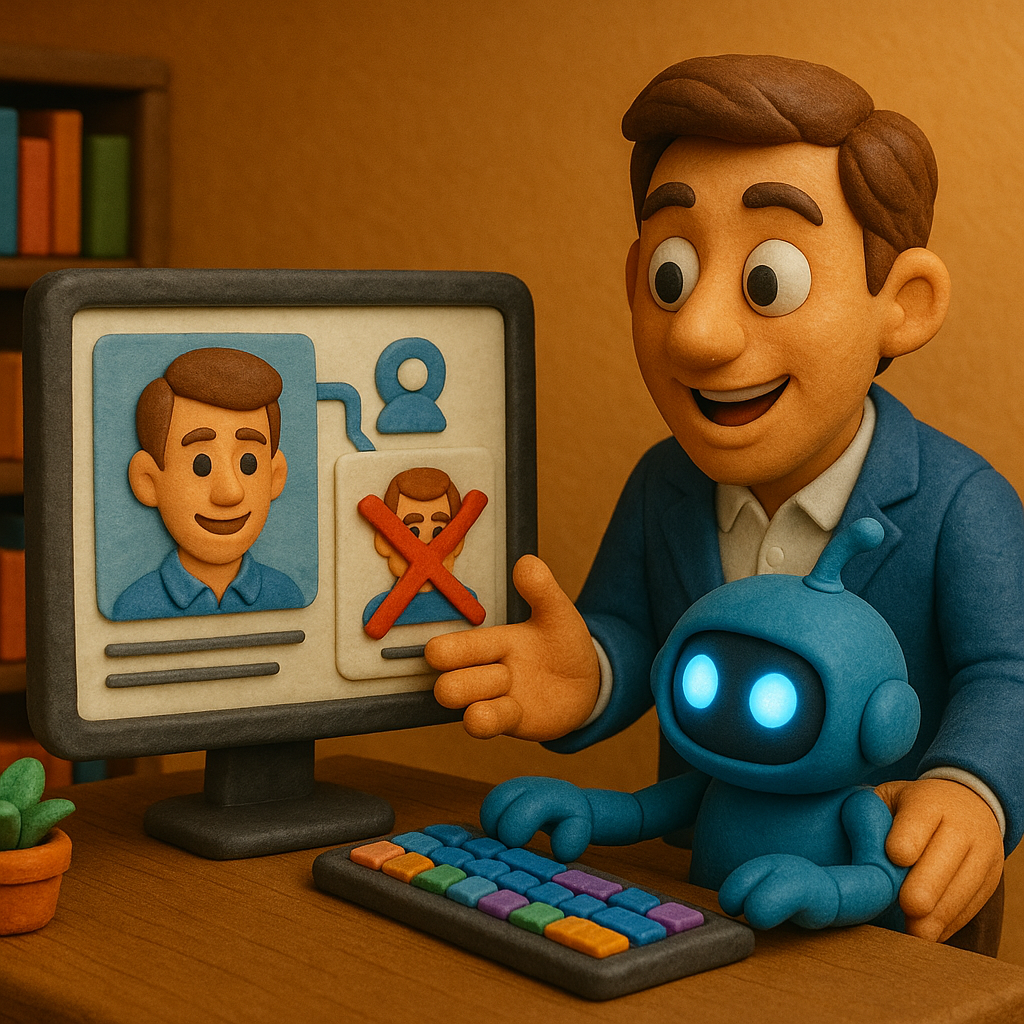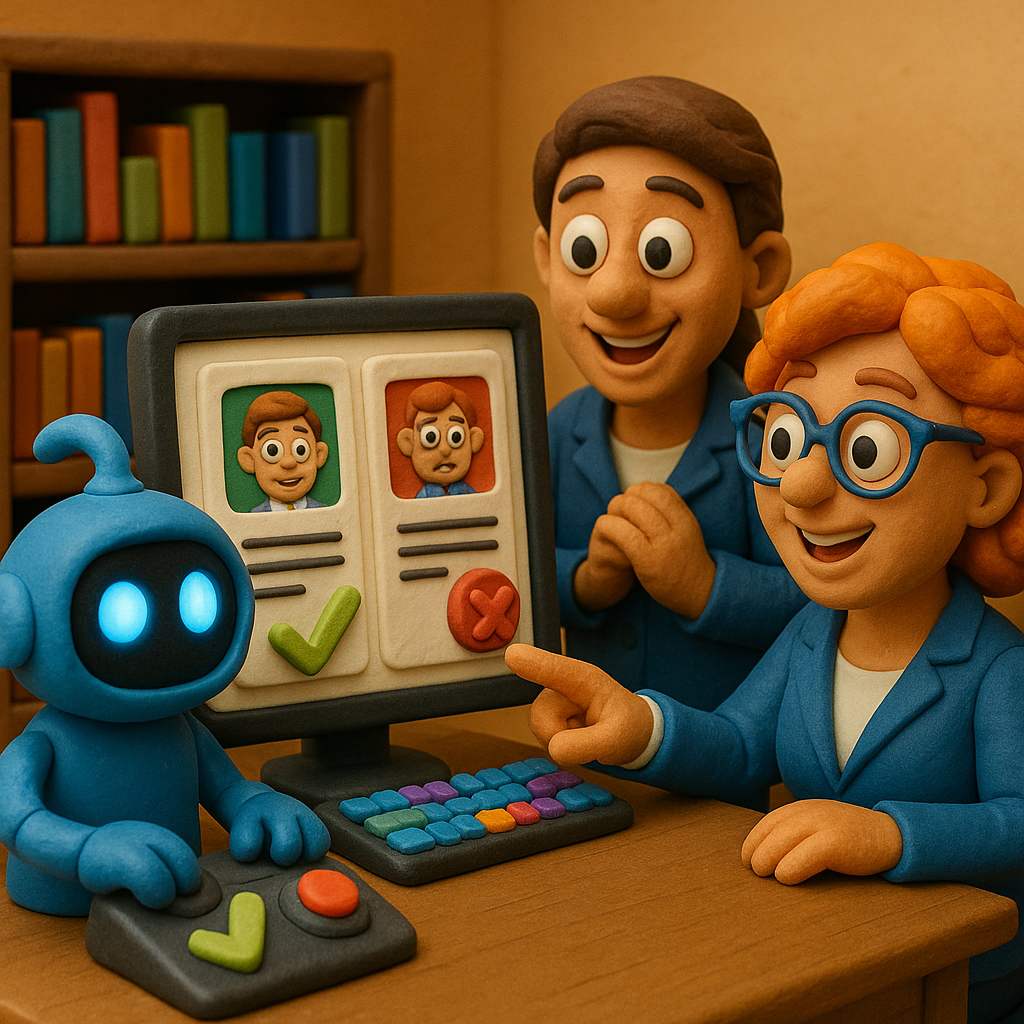
How to Build Custom Resume Screening Workflows with No-Code Tools
How to Build Custom Resume Screening Workflows with No-Code Tools
Published on November 7, 2025 · Q&A format · Practical guide for non-technical recruiters building automated screening pipelines.

Q: What exactly counts as a "no-code" resume screening workflow?
It's any automated hiring pipeline you build using visual tools instead of writing code. Think drag-and-drop builders like Zapier or Make.com where you connect apps with "when this happens, do that" logic.
Example workflow: Email arrives with resume → Extract attachment → Send to AI screening API → Score candidate → If score >80, add to ATS and schedule interview → Send Slack notification to hiring manager. Zero code, all done with point-and-click.
In 2025, no-code tools are powerful enough to handle everything from basic resume parsing to complex multi-stage screening with conditional branching. You're really only limited by your imagination (and maybe your tool's monthly task quota).
Q: Why would I build custom workflows instead of just using my ATS?
Most ATSs are built for the median use case—they're inflexible. Custom workflows let you:
- Add AI screening to ATSs that don't have it natively
- Auto-route candidates based on custom logic (e.g., "Python devs → Team A, designers → Team B")
- Sync across tools your ATS doesn't integrate with (Notion, Airtable, Monday.com, custom DBs)
- Build role-specific pipelines (engineering screening looks different than sales)
- Add steps your ATS skips (pre-screening questions, auto-rejection emails, interview scheduling)
Plus, if you're at a startup or small company without an ATS, no-code tools become your hiring infrastructure for pennies compared to enterprise ATS licensing.
Q: What are the best no-code platforms for resume screening workflows?
The big three in 2025:
- Zapier: 7000+ app integrations, easiest for beginners, strong AI app support. Great for simple linear workflows. $20-50/month.
- Make.com (formerly Integromat): More powerful than Zapier—supports complex branching, loops, error handling. Visual flow builder is chef's kiss. $9-29/month.
- n8n: Open-source alternative, self-hostable. Free if you run it yourself, steeper learning curve. Best if you want full control.
Supporting cast:
- Airtable: Acts as your database/ATS. Pairs beautifully with Zapier/Make for storing candidates and tracking pipeline stages.
- Google Sheets: Free option for candidate tracking if Airtable feels like overkill.
- Typeform/Fillout: Custom application forms that trigger workflows.
Most teams use Make.com + Airtable or Zapier + Google Sheets as their core stack.
Q: Can you walk me through a simple workflow example?
Sure! Here's a basic "Email Resume → AI Screening → ATS" pipeline in Zapier:
Trigger: Gmail - New email with attachment in jobs@company.com
Step 1: Gmail - Download attachment (PDF/DOCX resume)
Step 2: Webhooks - POST resume to AI screening API (returns JSON with score, skills, experience)
Step 3: Filter - Only continue if score >= 70
Step 4: Google Sheets - Add row with candidate name, email, score, skills
Step 5: Gmail - Send "We received your application" reply
Step 6: Slack - Post to #hiring channel: "New candidate: [Name] scored [Score]"
Total setup time: 20-30 minutes. Runs automatically 24/7. Costs about $0.05 per candidate (Zapier task charges).
Q: How do I handle the actual AI resume screening part in a no-code tool?
You'll use a Webhooks or HTTP Request action to call a resume screening API. Most no-code tools support this. Here's the flow:
- Input: Resume file (PDF/DOCX) from previous step
- Action: HTTP POST to screening API endpoint (e.g.,
https://api.resumescreener.com/v1/analyze) - Headers:
Authorization: Bearer YOUR_API_KEY - Body: Multipart form data with resume file + job requirements JSON
- Response: Parse JSON output:
{"score": 85, "skills": ["Python", "React"], "experience_years": 5}
In Zapier, this is the "Webhooks by Zapier" action set to POST. In Make.com, it's the "HTTP" module. Zero code required—just paste your API endpoint and key.
Most AI screening tools (including ours) provide step-by-step Zapier/Make setup guides because this is so common.
Q: What if I need conditional logic—like different scoring for junior vs senior roles?
That's where no-code tools shine. Use Filter or Router steps:
Example in Make.com:
- Step 1: Trigger - New resume uploaded
- Step 2: Router - Split into three paths:
- Path A: If job_title contains "Senior" → Send to API with
min_experience=5 - Path B: If job_title contains "Junior" → Send to API with
min_experience=1 - Path C: Default → Send to API with standard criteria
- Path A: If job_title contains "Senior" → Send to API with
- Step 3 (each path): Parse response and route to different ATS folders or Airtable views
You can nest these conditions as deep as needed. Want to route engineers differently than marketers differently than sales? Just add more router branches.
Q: How do I store and manage candidate data without an ATS?
Airtable is the gold standard here. Set up a base with tables like:
Candidates Table:
- Name, Email, Phone, LinkedIn
- Resume (attachment field)
- AI Score (number)
- Skills Matched (multi-select)
- Stage (single-select: Applied, Screening, Interview, Offer, Rejected)
- Source (job board, referral, direct)
- Applied Date, Last Updated
Jobs Table:
- Title, Department, Required Skills, Experience Level
- Status (Open, On Hold, Closed)
- Linked Candidates (relation field)
Your no-code workflow writes to this automatically. Recruiters use Airtable views to filter (e.g., "Show me all 80+ scored Python devs applied this week"). You get Kanban boards, calendar views, forms—basically a custom ATS for $20/month.
Q: Can I auto-reject candidates below a certain score?
Yes, but be careful. Recommended approach:
- Score <50: Auto-reject with polite email ("Thanks, but we're moving forward with other candidates")
- Score 50-70: Mark as "Review Needed"—recruiter manually checks edge cases
- Score >70: Auto-advance to next stage
In your workflow, add a Paths/Router step after scoring that branches based on score ranges. Each path does something different (reject email, Slack alert, add to ATS, etc.).
Legal note: Some jurisdictions (NYC, California) require disclosing if you use AI for hiring decisions. Include this in your application form terms. Also, always allow candidates to request human review.
Q: How do I automatically schedule interviews with top candidates?
Use Calendly, Cal.com, or similar scheduling tools integrated into your workflow:
Example workflow:
- Step 1: Candidate scores >85
- Step 2: Create Calendly link (unique booking URL)
- Step 3: Gmail - Send email: "Congrats! Book your interview: [Calendly_Link]"
- Step 4: Wait for Calendly webhook (candidate booked)
- Step 5: Update Airtable stage to "Interview Scheduled"
- Step 6: Slack notification to hiring manager
Calendly's Zapier/Make integrations are rock-solid. You can even set different calendar availability for different roles (engineering interviews on Tuesdays/Thursdays, sales on Mon/Wed/Fri).
Q: How do I handle bulk resume uploads—like from a job fair or indeed.com?
Two approaches:
Approach A: Google Drive/Dropbox + Batch Processing
- Trigger: New files in
/Resumes/Batch_Uploadfolder - Action: For each file, run screening workflow
- Caveat: Most tools charge per file processed. 100 resumes = 100 tasks = $5-10 in Zapier costs
Approach B: Bulk API Call (Make.com preferred)
- Upload resumes to Dropbox
- Make.com grabs all files in folder
- HTTP module sends batch request to screening API (some support
POST /batchwith multiple files) - Parse batch response and write to Airtable in one go
- Way cheaper—counts as 1-2 operations instead of 100
For regular high volume (500+ resumes/week), consider a hybrid: use no-code for individual applications, direct API + custom script for bulk uploads.
Q: Can I extract data from resumes that are just images or scans?
Yes, with OCR (Optical Character Recognition). Add an OCR step before the screening API:
Option 1: Google Cloud Vision API (has Zapier integration)
- Input: Image/PDF file
- Output: Extracted text
- Cost: ~$1.50 per 1000 pages
Option 2: Nanonets or Rossum (specialized for documents)
- Better accuracy for resumes specifically
- More expensive but handles wonky formats
Workflow: Receive image → OCR → Extract text → Send text to screening API. Works surprisingly well even on smartphone photos of printed resumes (common at job fairs).
Q: How do I sync candidates back to my existing ATS (Greenhouse, Lever, etc.)?
Most major ATSs have Zapier/Make integrations. Example with Greenhouse:
- Step 1: AI screening completes in your workflow
- Step 2: Greenhouse - Create Candidate
- Step 3: Greenhouse - Add Application (link candidate to job)
- Step 4: Greenhouse - Add Note (include AI score breakdown)
- Step 5: Greenhouse - Advance to Stage (e.g., "Phone Screen" if score >75)
This way, your no-code workflow becomes a pre-processing layer. Resumes get AI-screened before hitting your ATS, and only qualified candidates clutter your recruiter's dashboard.
If your ATS doesn't have a native integration, use webhooks or email parsing (most ATSs accept candidates via email).
Q: What about GDPR/data privacy—is storing candidate data in Airtable/Sheets legal?
It can be, with proper setup:
- Data processing agreement: Airtable/Google have GDPR-compliant DPAs you must sign
- Retention policy: Auto-delete candidates after X months (use Zapier scheduled workflows to purge old records)
- Consent tracking: Add a checkbox to your application form: "I consent to data processing for recruitment purposes"
- Right to deletion: Build a workflow where candidates can email
privacy@company.comand trigger auto-deletion - Encryption: Both Airtable and Google Sheets encrypt at rest, but consider removing sensitive fields (SSN, birth date) from workflows entirely
For EU/UK companies, also consider self-hosted options like n8n + your own database so data never leaves your infrastructure.
Q: How much does a typical no-code screening workflow cost to run?
Let's break it down for a small company (100 applicants/month):
Tool costs:
- Make.com: $9/month (10K operations—plenty for 100 resumes)
- Airtable: $20/month (Pro plan for automation features)
- AI Screening API: $0.20/resume × 100 = $20/month
- Calendly: $10/month (Standard plan)
Total: ~$60/month
Compare this to:
- Enterprise ATS: $200-500/month minimum
- Hiring one recruiter to manually screen: $4000+/month
Even at 500 applicants/month, you're looking at ~$150/month in no-code tools vs thousands for traditional solutions. And you get way more customization.
Q: What happens when a workflow breaks—how do I debug?
No-code platforms have built-in debugging:
- Task history: See every workflow execution, inputs/outputs for each step
- Error alerts: Email/Slack notification when workflows fail
- Test mode: Run workflows manually with sample data before going live
- Logs: Check API response codes (200 = success, 401 = auth failed, 500 = server error)
Common issues and fixes:
- API key expired: Regenerate and update in workflow settings
- Wrong data format: Add a Formatter step to convert (e.g., date string → ISO format)
- Rate limit hit: Add Delay steps between API calls or upgrade your API plan
- Empty fields: Add Filter to skip records with missing data
Pro tip: Join the Zapier/Make community forums—people share solutions to common hiring workflow issues.
Q: Can I A/B test different screening criteria with no-code tools?
Absolutely. Here's how:
- Step 1: Add a Random Number Generator step (0-100)
- Step 2: Router:
- If number ≤50: Use Scoring Criteria A (strict: require 5+ years exp)
- If number >50: Use Scoring Criteria B (lenient: 3+ years OK)
- Step 3: Tag candidates with which criteria they were scored against
- Step 4: Track downstream metrics (interview pass rate, hire rate) per criteria
After a month, analyze which criteria produced better hires. This is how big companies optimize—you can do it too without a data science team.
Q: What's the #1 mistake people make building these workflows?
Over-automating too fast. The mistake: "Let's auto-reject, auto-schedule, auto-send offers, all on day one!"
Better approach:
- Week 1: Build a simple workflow (email → parse → store in sheet). Run it manually, check results
- Week 2: Add AI scoring. Review all scores to calibrate thresholds
- Week 3: Add conditional logic (high scorers → ATS, low scorers → hold for review)
- Week 4: Add auto-emails and scheduling once you trust the scoring
Start semi-automated with human checkpoints. Gradually remove checkpoints as you gain confidence. Rushing leads to embarrassing mistakes like auto-rejecting your CEO's nephew or scheduling interviews at 3 AM.
Q: Can I use ChatGPT/Claude API in my workflow for custom screening questions?
Yes! This is a power move. Example:
- Step 1: Resume parsed, extracted as text
- Step 2: HTTP POST to OpenAI API:
"Based on this resume, answer: Does this candidate have leadership experience managing 5+ person teams? Yes/No with brief explanation." - Step 3: Parse AI response, store answer
- Step 4: If answer = "Yes", add 10 bonus points to score
You can ask nuanced questions that standard parsing APIs miss: "Has this person worked at high-growth startups?" "Do they have experience with B2B SaaS?" "Any red flags in career progression?"
Cost: ~$0.02 per resume for GPT-4 analysis. Totally worth it for custom criteria.
Q: What's next—where is no-code resume screening headed?
Exciting stuff coming:
- AI agents: Tools like Zapier's "AI Actions" let you describe workflows in plain English and they auto-build them
- Multimodal screening: No-code tools connecting resume + LinkedIn + GitHub + portfolio analysis
- Predictive scoring: "This candidate is likely to accept an offer based on X factors" built into workflows
- Voice/video screening: Integrate async video interview tools (HireVue, VidCruiter) into no-code pipelines
Within 2-3 years, a non-technical recruiter will be able to say "Build me a workflow that screens engineers, auto-schedules top candidates, and syncs to Greenhouse" and an AI agent will generate the entire workflow in seconds. We're already 80% there.
Ready to build your first workflow? Start with our free resume screening API—works seamlessly with Zapier and Make.com. We have pre-built templates to get you running in 10 minutes.
Related reading
- Why RESTful API Resume Screening Beats Manual Processing
- How to Integrate AI Resume Screening API with Your ATS
- Best Practices for Bulk Resume Processing via API
Join the conversation
Ready to experience the power of AI-driven recruitment? Try our free AI resume screening software and see how it can transform your hiring process.
Join thousands of recruiters using the best AI hiring tool to screen candidates 10x faster with 100% accuracy.
Related Articles
How to Automate Resume Screening with Zapier Integration
Stop manually screening resumes. This practical Q&A shows you how to connect AI recruitment software to your hiring work...
Why RESTful API Resume Screening Beats Manual Processing
Still manually reviewing hundreds of resumes? This Q&A breaks down why RESTful APIs are crushing manual screening in 202...
What Conversational AI Resume Screening Looks Like in Practice
Conversational AI resume screening transforms candidate experience with 24/7 chatbot interactions, instant feedback, and...
How Startups Screen Resumes on Zero Budget: Complete Guide
Pre-revenue startup with no hiring budget? This Q&A shows you how to screen 200+ resumes/year using 100% free tools—AI r...
Why Skills-Based Resume Screening Outperforms Degree-Based Filtering
Still filtering resumes by college degrees? This Q&A breaks down why skills-based screening finds better candidates, red...
Best Free vs. Premium Resume Screening: Complete 2025 Comparison
Evaluating resume screening tools? This comprehensive Q&A compares free and premium AI recruitment software across 12 ke...
From the forum
Popular Posts
Free AI Resume Screening Software That Actually Works
Best Free AI Resume Screening Software 2025
How AI-Powered Resume Screening Reduces Hiring Time by 90% While Maintaining Quality Candidates
How Free Resume Screening Software is Revolutionizing Small Business Hiring in 2025
Why Manual Resume Screening is Becoming Obsolete in 2025: The Complete Shift to Intelligent Hiring
Recent Posts

How Video Resume Screening with AI Changes Hiring in 2025
November 12, 2025

What Conversational AI Resume Screening Looks Like in Practice
November 12, 2025

How Startups Screen Resumes on Zero Budget: Complete Guide
November 11, 2025
Why Skills-Based Resume Screening Outperforms Degree-Based Filtering
November 11, 2025

Best Free vs. Premium Resume Screening: Complete 2025 Comparison
November 10, 2025